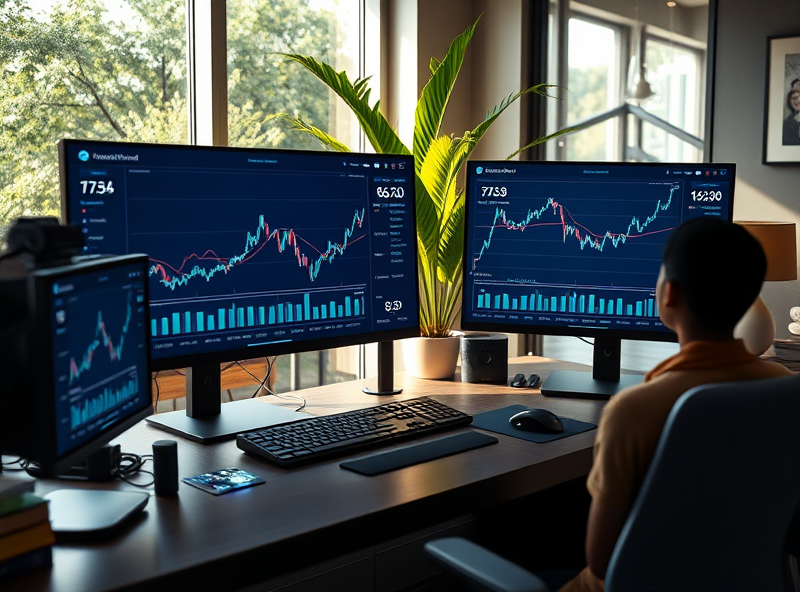
Visa (V) Stock: Exploring the Global Payments Leader

Hello there! Let’s take a friendly look at Visa Inc., known by its stock ticker V. When you think about paying for things, whether online or in a store, chances are you’ve used a Visa card. But Visa isn’t a bank that lends you money; it’s the technology company that makes those transactions happen. Understanding this key difference is crucial to understanding Visa as an investment.
Visa operates one of the world’s largest retail electronic payments networks. Think of them as the digital highways that connect consumers, merchants, banks, and governments, enabling the seamless transfer of value. Their business model is fascinating because they primarily earn revenue from processing transactions, not from the interest on loans.
Visa’s Core Business Model: The Network Effect
Visa’s business is built on a powerful network effect. The more consumers use Visa cards, the more merchants want to accept them. The more merchants accept Visa, the more attractive it is for banks to issue Visa cards to consumers. This creates a virtuous cycle that strengthens Visa’s position in the payments ecosystem.
Their revenue comes mainly from service revenues (based on payment volume) and data processing revenues (based on the number of transactions processed). They also earn international transaction revenues when cardholders use their Visa cards outside their home country. This model is highly scalable; processing more transactions doesn’t proportionally increase their costs.
The Global Reach of Visa’s Network
Visa’s network spans the globe, connecting billions of cardholders, millions of merchants, and thousands of financial institutions in over 200 countries and territories. This extensive reach is a significant competitive advantage, making it difficult for new entrants to replicate their infrastructure and relationships.
Their network facilitates transactions in multiple currencies and across various channels, including physical point-of-sale terminals, e-commerce websites, and mobile payments. This global footprint positions Visa to benefit from the worldwide growth in electronic payments.
Financial Performance and Key Metrics
When evaluating Visa’s financial health, investors often look at metrics like payment volume growth, processed transactions growth, net revenues, and operating margins. Growth in payment volume and processed transactions directly translates into higher revenues for Visa.
Visa typically enjoys high operating margins due to the scalable nature of its business. Once the network infrastructure is built, the cost of processing additional transactions is relatively low. This contributes to strong profitability and cash flow generation.
Growth Drivers for Visa
Several factors are driving growth for Visa. The ongoing global shift from cash and checks to electronic payments is a major tailwind. As economies develop and e-commerce expands, more transactions move onto digital networks like Visa’s.
Expansion into new payment flows, such as business-to-business (B2B) payments, government-to-consumer (G2C) disbursements, and person-to-person (P2P) transfers, represents significant growth opportunities beyond traditional consumer card payments. Visa is actively developing solutions for these areas.
Innovation in the Payments Space
The payments industry is constantly evolving, driven by technological innovation. Visa is investing heavily in new technologies like tokenization for enhanced security, contactless payments, and real-time payments. They are also exploring the potential of blockchain and digital currencies, though their core business remains focused on traditional fiat currency transactions.
Staying at the forefront of payments technology is crucial for Visa to maintain its competitive edge and adapt to changing consumer and merchant preferences.
Competition in the Payments Industry
While Visa is a dominant player, the payments industry is competitive. Its main competitor is Mastercard (MA), which operates a similar network. Other competitors include American Express (AXP) and Discover (DFS), which operate integrated networks (issuing cards and processing transactions themselves).
Emerging competitors include fintech companies offering alternative payment solutions, peer-to-peer payment apps, and potentially new payment systems developed by governments or tech giants. Visa must continue to innovate and leverage its network to stay ahead.
Risks and Challenges
Despite its strong position, Visa faces risks. Regulatory changes around interchange fees (fees paid by merchants to banks) or data privacy could impact its business model and profitability. Economic downturns could lead to reduced consumer spending and transaction volumes.
Security threats, such as data breaches and fraud, are constant concerns for a payments network. Visa invests heavily in security, but the risk remains. Competition, as mentioned, is also a persistent challenge.
Visa’s Role in E-commerce Growth
The explosion of e-commerce globally has been a significant boon for Visa. Online transactions rely heavily on card networks. As more shopping moves online, the volume of transactions processed by Visa increases, driving revenue growth. Visa is working with online merchants to enhance security and streamline the checkout process.
Cross-Border Payments
Cross-border transactions are particularly lucrative for Visa, as they typically involve higher fees. As global travel and international e-commerce continue to grow, Visa’s cross-border volume benefits. Facilitating smooth and secure international payments is a key part of their service offering.
Visa Direct and Real-Time Payments
Visa Direct is a service that enables fast, secure, and convenient money movement directly to eligible cards, bank accounts, and digital wallets. This push payment capability is expanding Visa’s reach into areas like gig economy payouts, insurance disbursements, and P2P transfers, tapping into new revenue streams beyond traditional consumer purchases.
The Importance of Security and Trust
Trust is paramount in the payments industry. Consumers and merchants need to feel confident that their transactions are secure. Visa invests billions in advanced security technologies, fraud prevention tools, and network resilience to protect the integrity of its network and maintain trust among its participants.
Valuation Considerations for V Stock
When considering investing in V stock, investors often look at valuation metrics like the price-to-earnings (P/E) ratio, price-to-sales (P/S) ratio, and dividend yield. As a high-quality, profitable company with strong growth prospects, Visa often trades at a premium valuation compared to the broader market or more traditional financial institutions.
Analyzing these metrics in the context of Visa’s growth rate, profitability, and industry position is important for determining if the stock is trading at an attractive price.
Visa’s Capital Allocation Strategy
Visa returns value to shareholders through dividends and share buybacks. They aim to balance reinvesting in the business for future growth with returning excess capital to shareholders. Their strong free cash flow generation supports their ability to do both.
Conclusion: A Network Powerhouse
In conclusion, Visa (V) is a global leader in digital payments, operating a powerful network that is essential to the modern economy. Its scalable business model, global reach, and focus on innovation position it to benefit from the ongoing shift to electronic transactions and the expansion into new payment flows. While facing competition and regulatory risks, Visa’s fundamental role in the payments ecosystem makes it a compelling company for investors interested in the future of finance.



